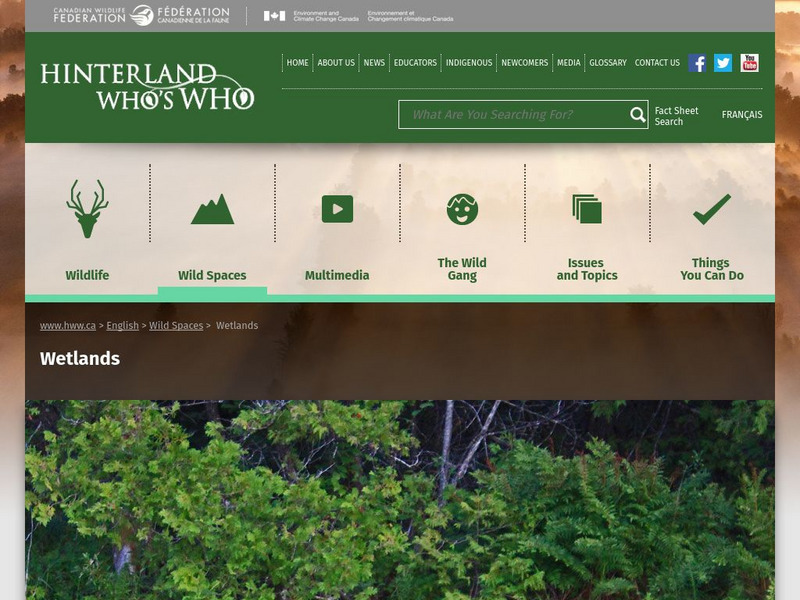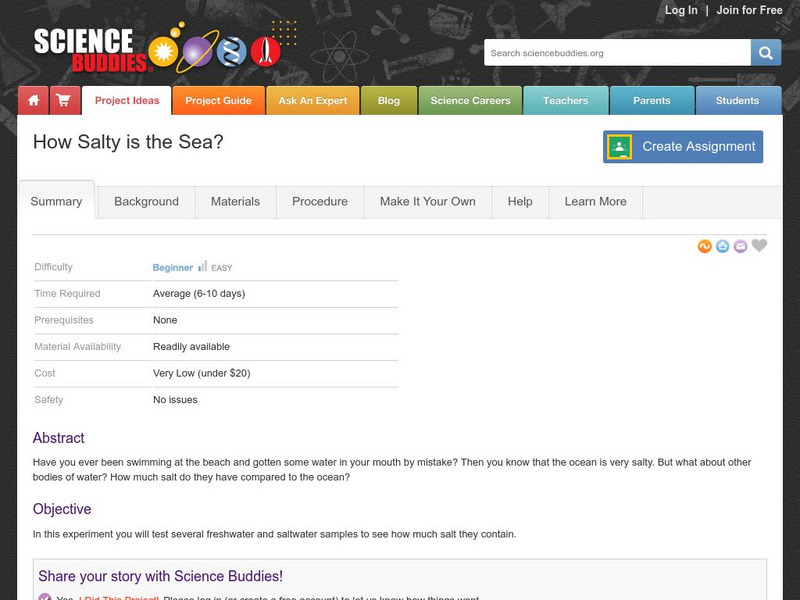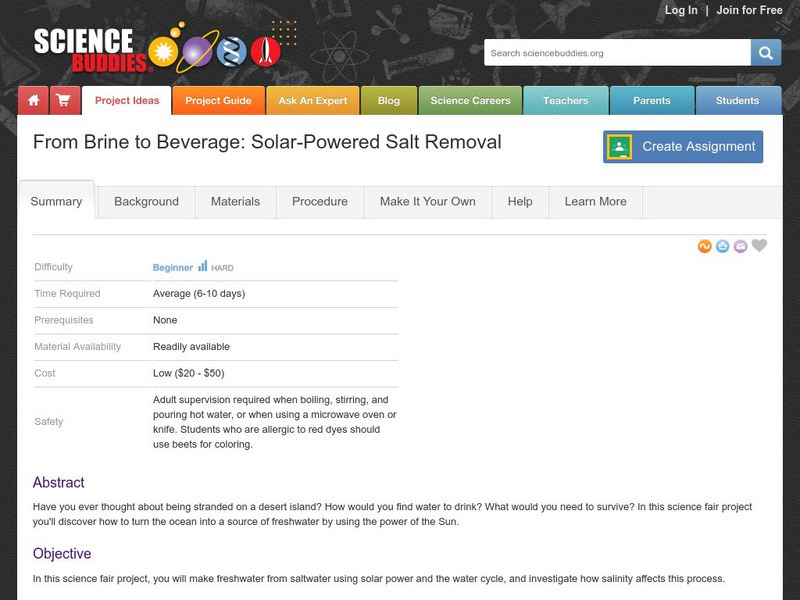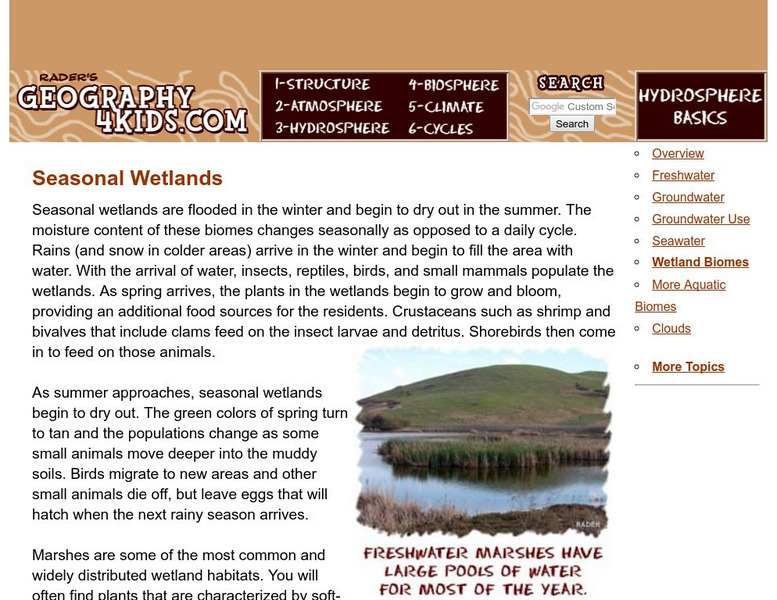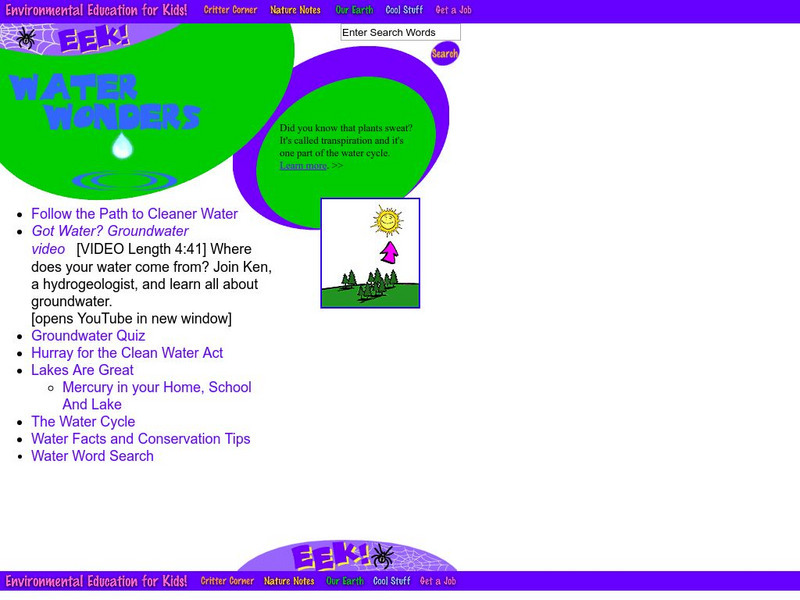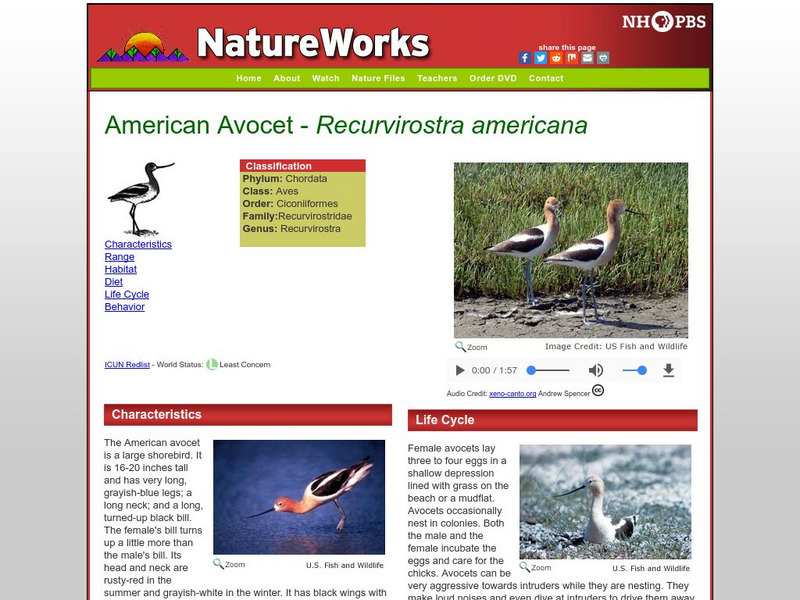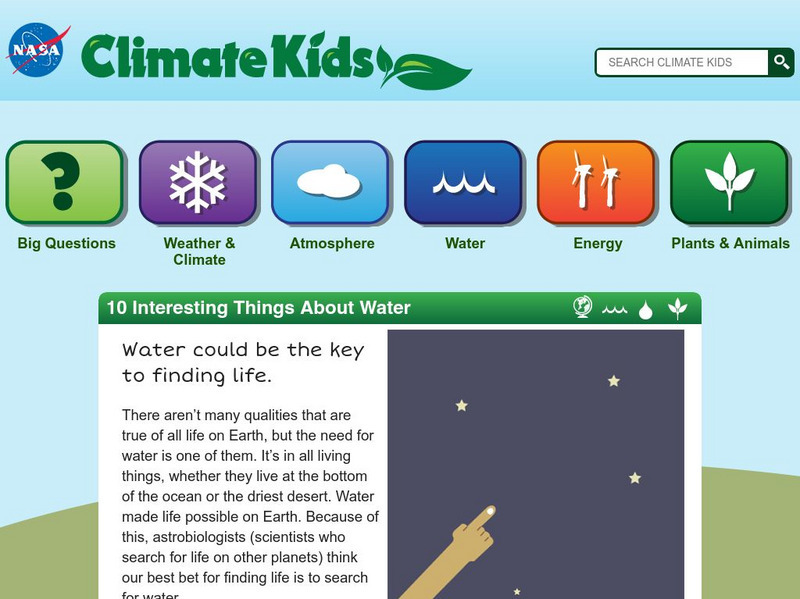Hi, what do you want to do?
Canadian Wildlife Federation
Hinterland Who's Who: Wetlands
Learn about Canada?s wetlands, what they are and where they are located. Wetlands are divided into two classes: freshwater and saltwater. They are further separated into four main types: ponds, marshes, swamps, and peatbogs. Discover the...
Science Buddies
Science Buddies: How Salty Is the Sea?
Have you ever been swimming at the beach and gotten some water in your mouth by mistake? Then you know that the ocean is very salty. Bodies of freshwater also contain some salt, but much less compared to oceans. In this experiment you...
Science Buddies
Science Buddies: From Brine to Beverage: Solar Powered Salt Removal
In this science fair project you'll discover how to turn the ocean into a source of freshwater by using the power of the Sun, and the water cycle. You will ultimately find just how salinity affects this process.
Scholastic
Scholastic: Study Jams! Science: Ecosystems: Aquatic Ecosystems
A video and a short multiple-choice quiz on the topic of aquatic ecosystems. It discusses the difference between freshwater and saltwater ecosystems, then explains what the three ecozones are in a marine ecosystem.
Geography 4 kids
Geography4 kids.com: Seasonal Wetlands
Identify the four types of seasonal wetlands found across the earth. There are fresh water and salt water marshes, bogs, and swamps.
American Institute of Biological Sciences
Action Bioscience: Seawater Desalination: Panacea or Hype?
An article and resources for research and teaching that explains how technologies are being used to desalinate ocean waters to be used for various municipal, industrial, and domestic purposes including a means to provide fresh water to...
Environmental Education for Kids
Eek!: Water Wonders
This site from the Environmental Education for Kids contains colorful and detailed information on water resources. Site covers fascinating tips and facts, as well as engaging quizzes on the wonderful world of water. Best suited for...
Utah STEM Foundation
Utah Stem Action Center: Floating on the Great Salt Lake
Through exploring the phenomenon that it is easier to float on salt water than on fresh water, students will develop a conceptual model for molecules and how the arrangement of molecules affects density.
PBS
Nh Pbs: Nature Works: American Avocet
Learn more about the American Avocet through this informative site. This resource features characteristics, reproduction, range, food, and behavior of this fascinating bird, as well as an audio clip of the bird's song.
Other
University of Texas at Dallas: Why Is the Sea Salty?
A clear and concise explanation of why some of the earth's waters are salty and others are not.
American Museum of Natural History
American Museum of Natural History: O Logy: Stuff to Do: Density of Salty Water
An experiment to test what happens when ocean water hits a freshwater estuary. Each step is demonstrated with photographs and the difference between salinity and density is explained.
Science4Fun
Science4 Fun: Lakes
What is a lake? Learn about some famous lakes in the world and how they are formed.
NASA
Climate Kids: 10 Interesting Things About Water
Discover 10 very interesting things about water, including sources of life, ocean ecosystems, freshwater and ice, salt and salt water, sources of water, the body's water makeup, plant's consumption of water and the 3 states of water.
American Chemical Society
Inquiry in Action: Changing the Density of a Liquid: Adding Salt
In this activity, students will see that a carrot slice sinks in fresh water and floats in saltwater. Considering the placement of the carrot slice in water and salt water, students will infer that the density of salt water must be...
Canadian Wildlife Federation
Hinterland Who's Who: Estuaries
Learn about estuaries, where the fresh water rivers meet the salt water of the oceans. The unique features of estuaries are explained, followed by a look into estuarine food webs. Next find out about the different plants and animals that...
Idaho State University
Idaho State University: Water Pollution
Explore water pollution in surface water and groundwater and investigate the treatments for both. Also, check out what happens when salt water infiltrates the fresh water sources.
NOAA
Noaa: Estuaries 101 Curriculum: Nutrients in an Estuary
An overload of nutrients, called eutrophication (Greek for "good-nutrition"), can be harmful to estuaries. This phenomenon is also referred to as "over-enrichment," or "nutrient pollution". Students will investigate the range of...





